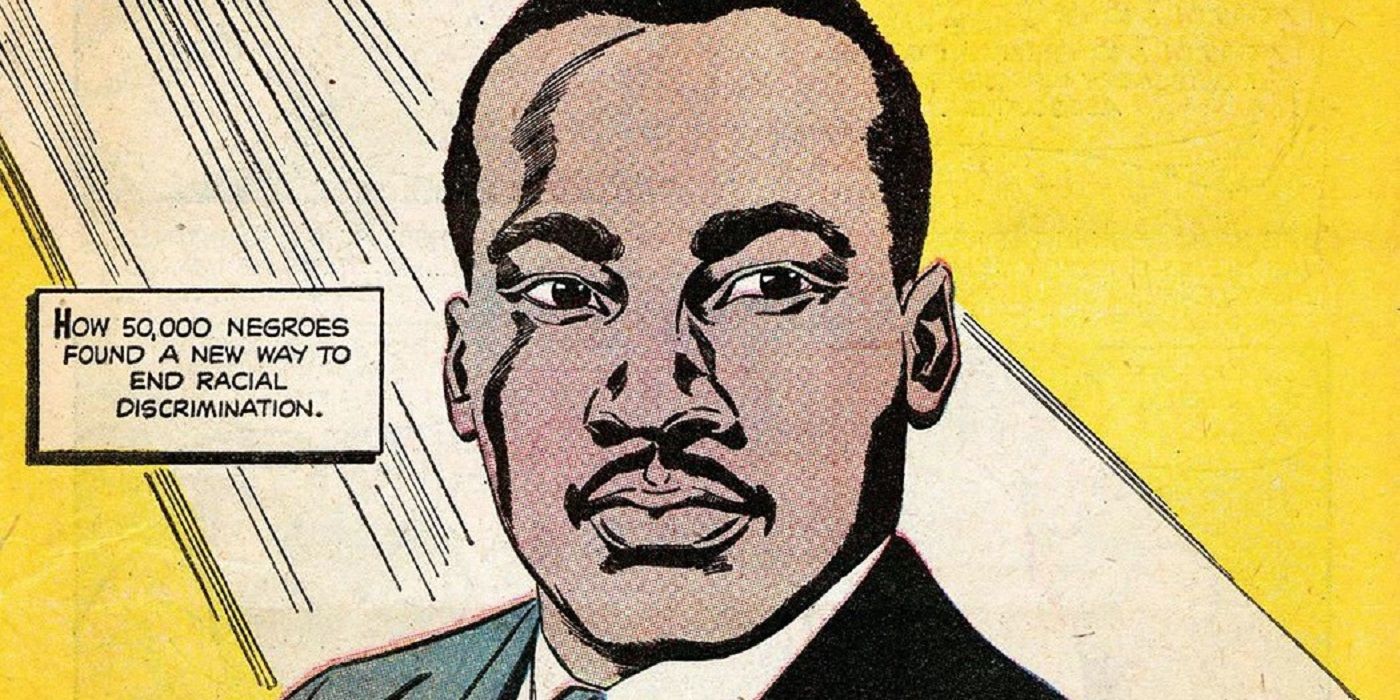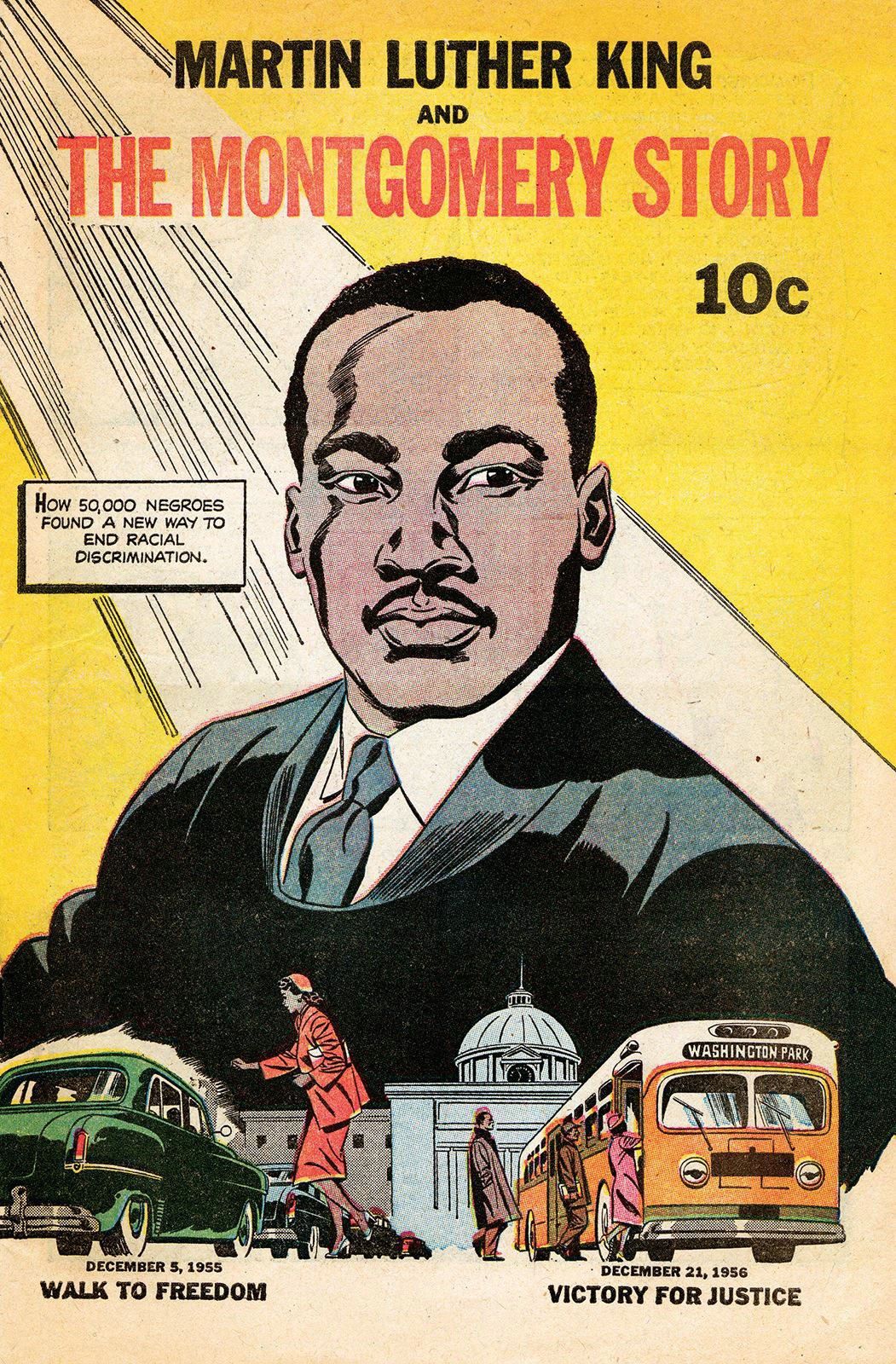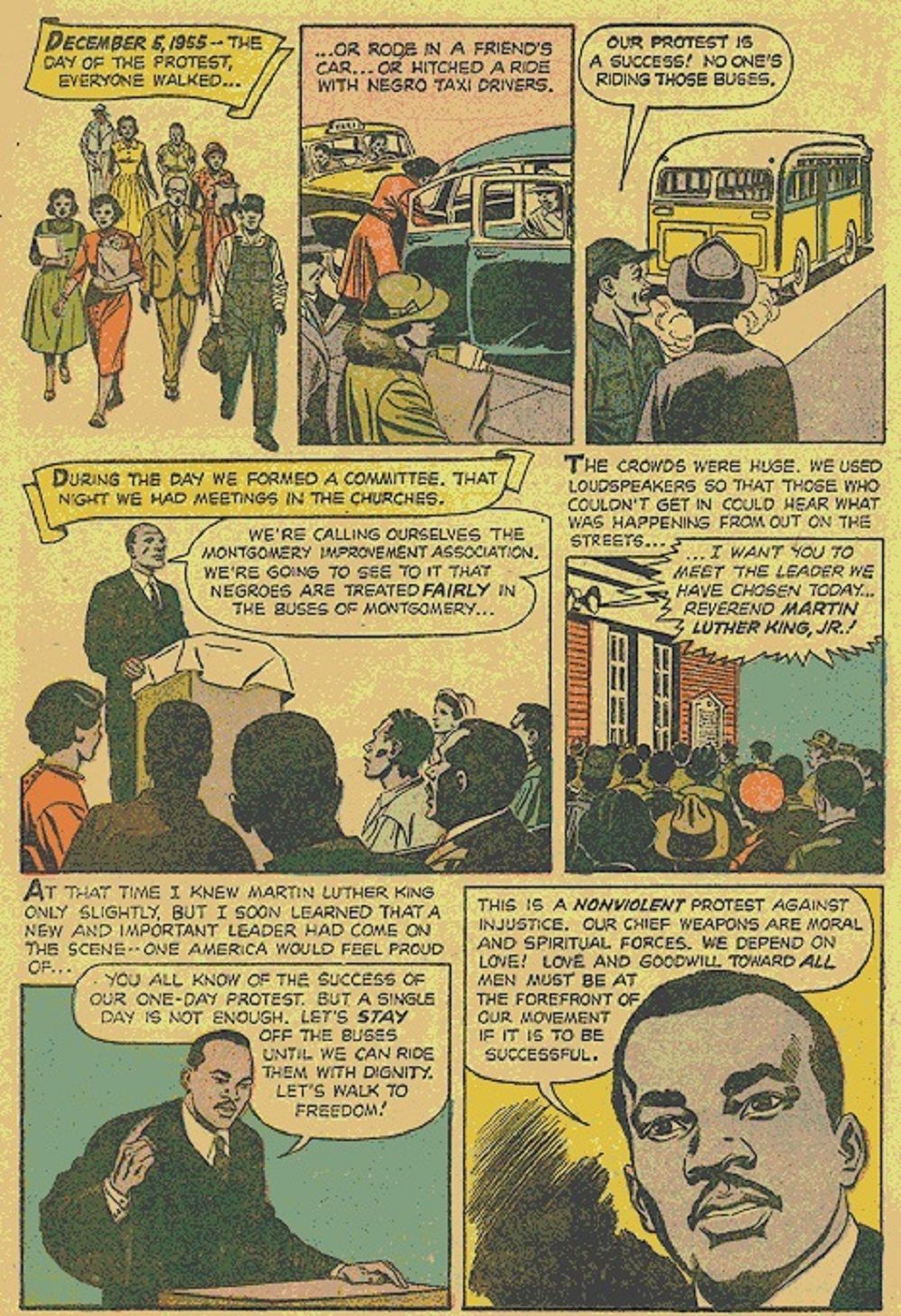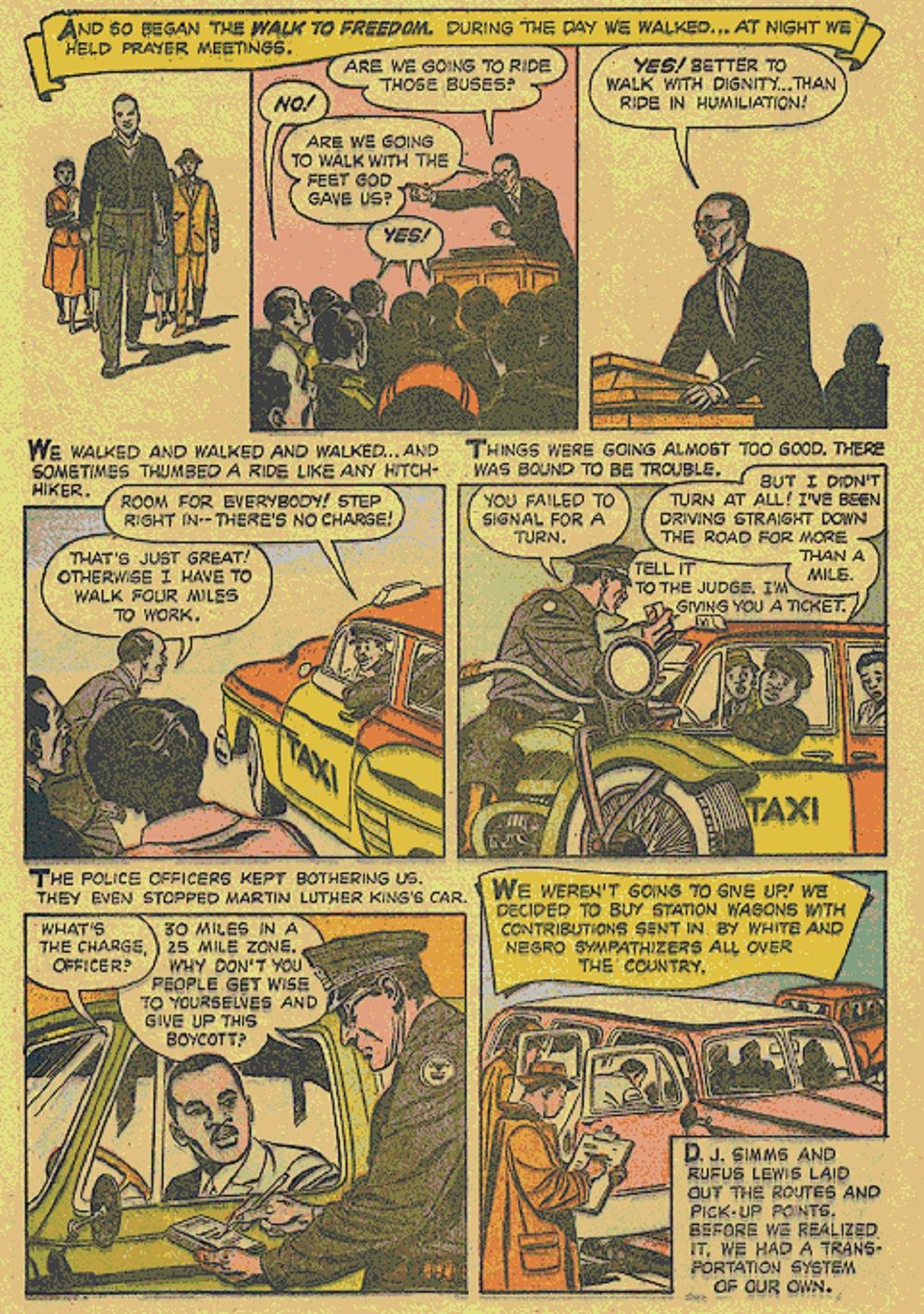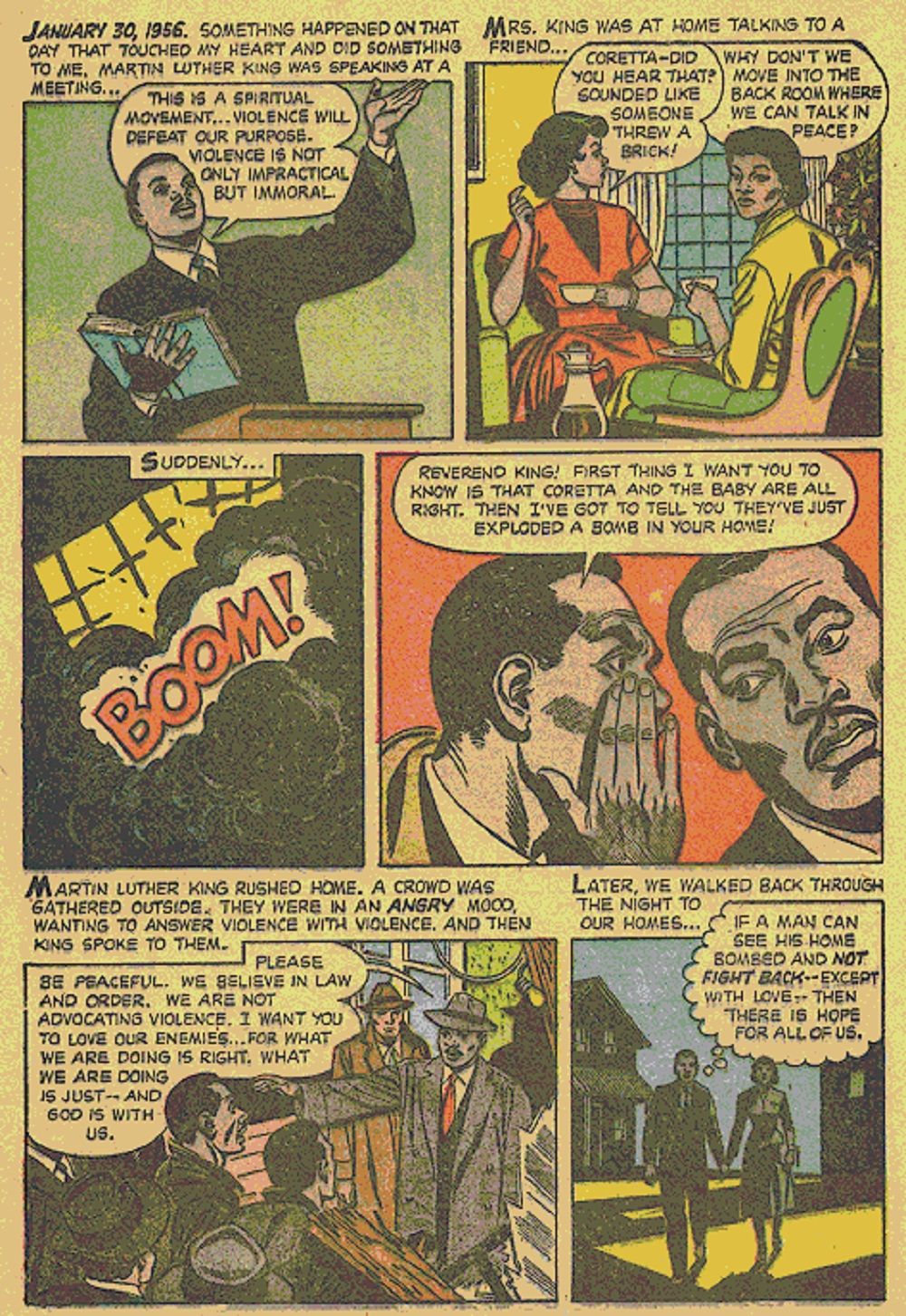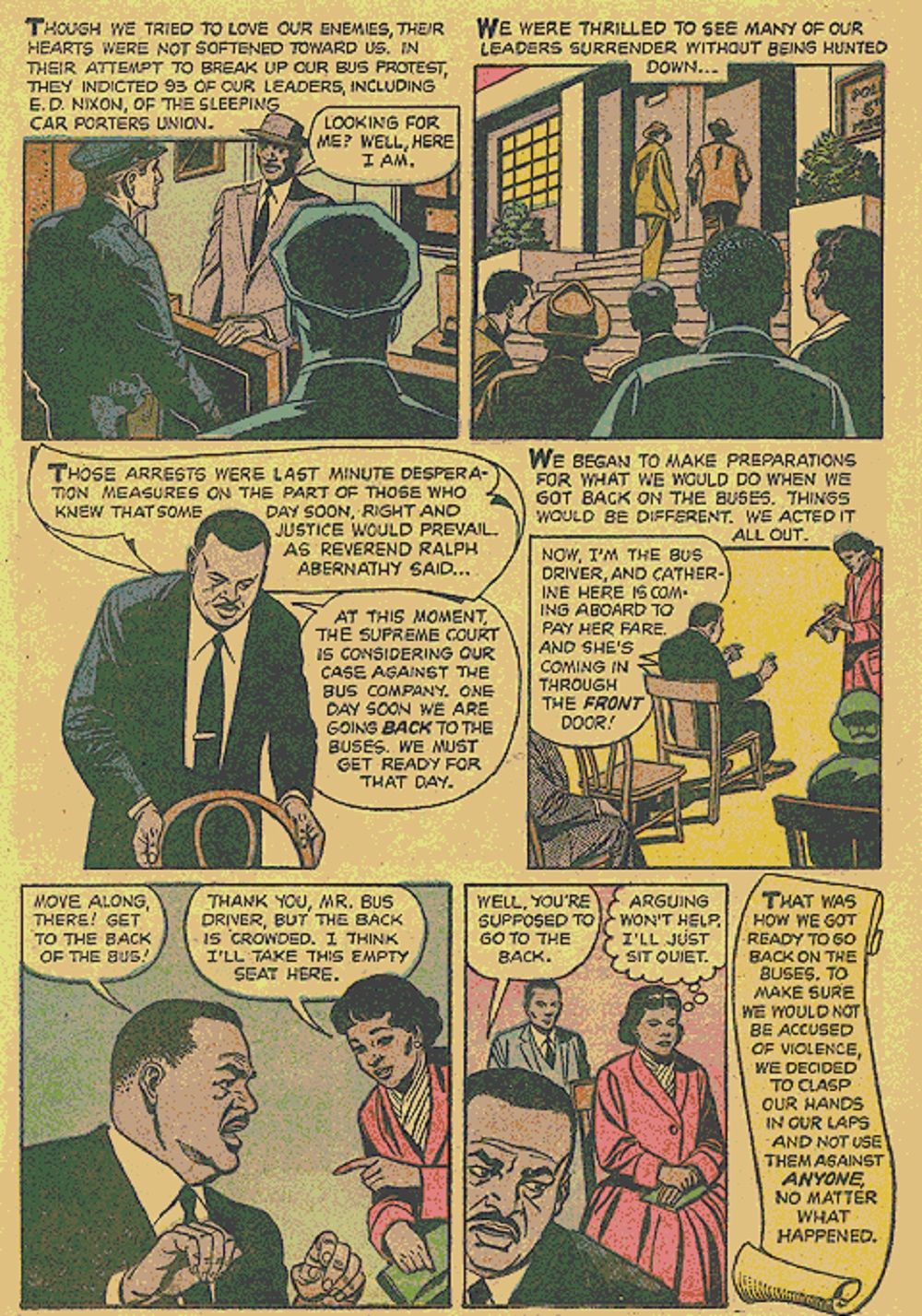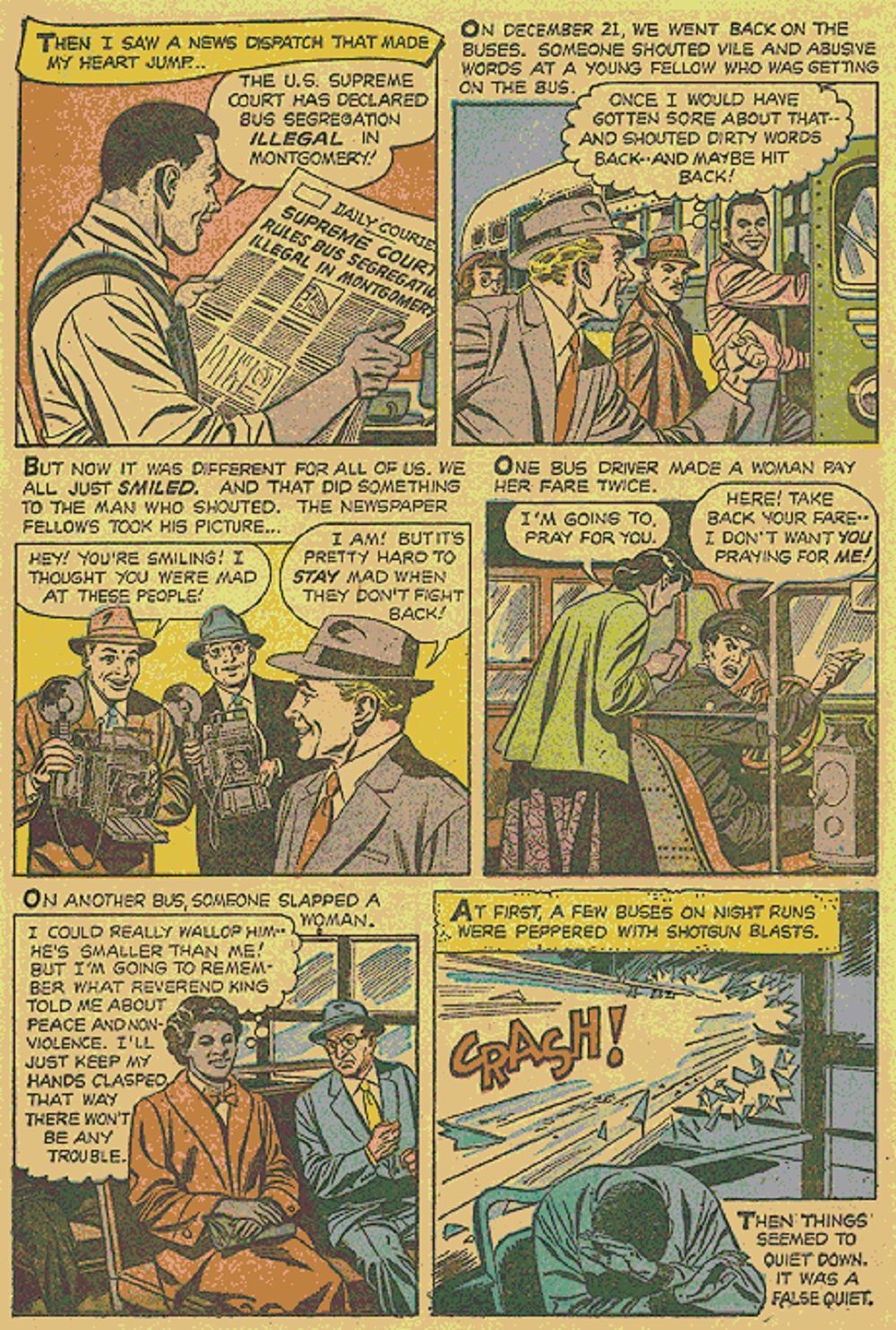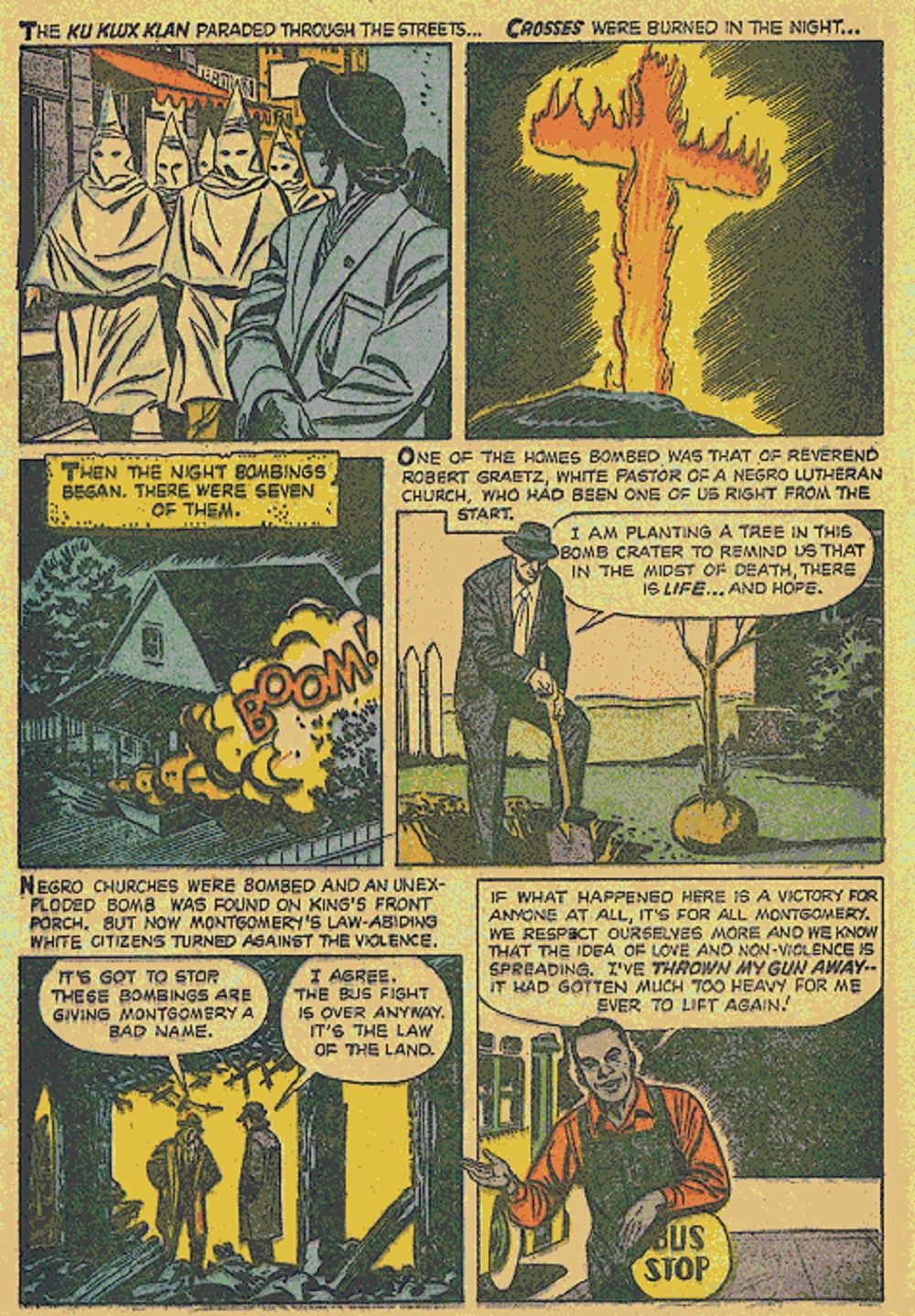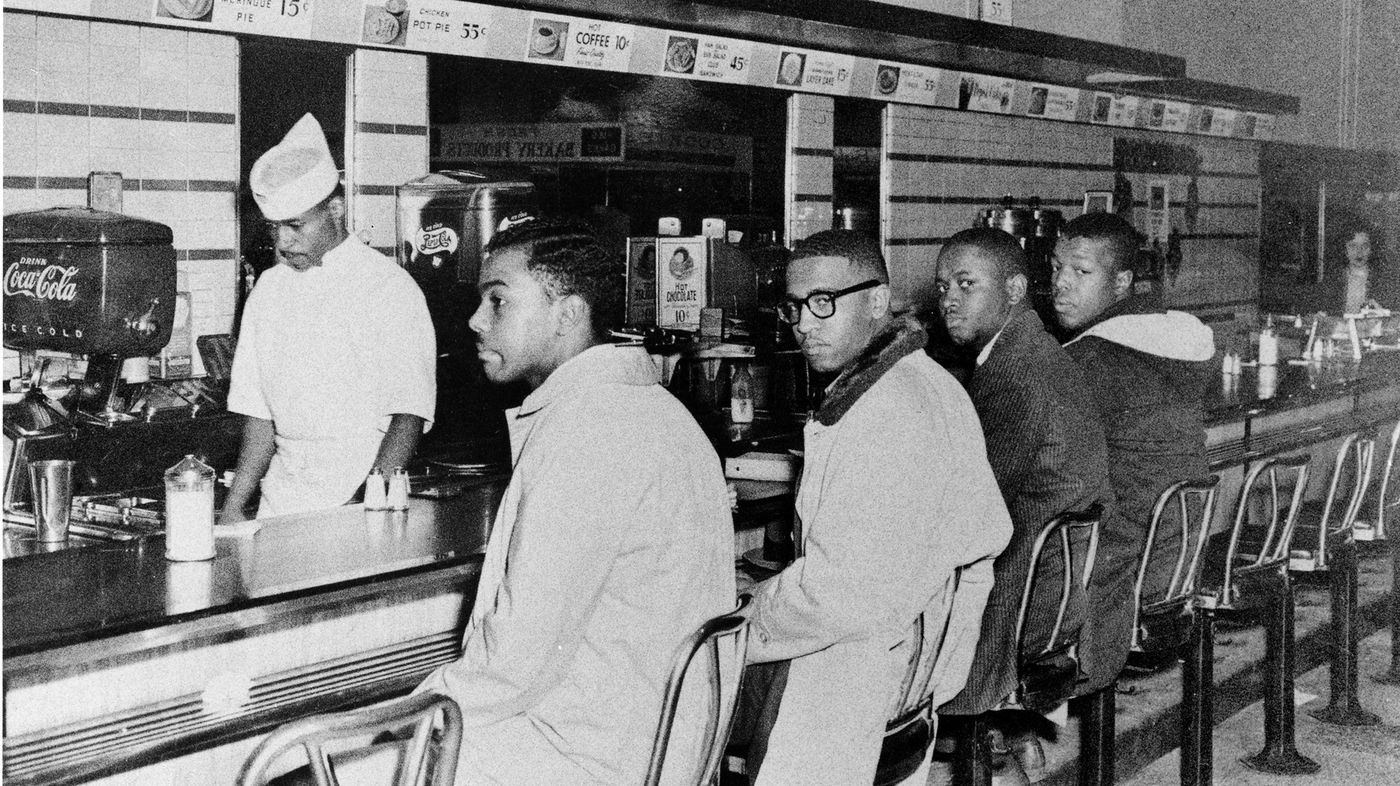Welcome to Comic Book Legends Revealed, where we examine comic book legends and whether they are true or false. This is a special Martin Luther King Day edition of CBLR!
COMIC LEGEND:
A Martin Luther King comic book inspired the iconic Greensboro Four sit-in
STATUS:
True
In 1957, the Fellowship of Reconciliation, which had played a role in the Montgomery Bus Boycotts, decided that a comic book could be useful to promote their message. So they commissioned a comic book starring Martin Luther King, who had been the head of the boycotts.
Al Capp's Studio supplied the art for the comic book for free due to Capp's admiration for King. They printed 250,000 copies and the Fellowship of Reconciliation made sure that the comic book would be distributed to schools, churches, civil rights groups, basically anywhere that it could be useful in spreading the message.
The main story told the story of the bus boycotts...
Then there was a bit at the end basically showing how best to duplicate the success of the bus boycott.
In 1960, Joseph McNeil, Franklin McCain, Ezell Blair Jr., and David Richmond were all students at North Carolina Agricultural and Technical State University. The friends wanted to do something about the civil rights cause, but they weren't sure WHAT to do. They wanted to get public attention, but they weren't HOW to do it.
That's where this comic book came in. As Andrew Aydin recalled in his brilliant piece of history on the Martin Luther King comic book (be sure to read it to get all of the details about the comic. I went bare bones here - Aydin also co-wrote John Lewis' awesome comic with artist Nate Powell, March).
In January of 1960, Martin Luther King and the Montgomery Story found its way to Greensboro, N.C., and into the hands of 18-year-old North Carolina A&T State University student Ezell Blair. After reading it, Blair decided to show it to his roommate, Joseph McNeil. Blair and McNeil had been in contact with local civil rights activists but, as the story goes, it was when McNeil finished reading the comic book that he made a decision of historic importance, declaring, "Let's have a boycott!"
In February of that year, the men, soon to be known as the Greensboro Four, decided to do a sit-in at the local Woolworths, which had a "whites only" lunch counter. They each ordered a cup of coffee and when they were each refused service, they refused to leave.
They inspired more activists to do the same and soon, boycotts spread through the South at other Woolworths and any other store that had segregated lunch counters.
After many months, the Greensboro Woolworths finally relented and integrated.
And it was all inspired by a comic book!
I had actually intended to do a Comic Book Legends Revealed installment on this back in 2006. I found an e-mail I wrote to someone who had done a documentary on the Greensboro Four, but they couldn't confirm that the group had read the comic book and no one else seemed to be able to confirm it. Obviously, I forgot about it over the years (Aydin's article came out in 2013) and I was super confused today, thinking that I must have written about this before until I found the e-mail showing that I did not.
EDITED TO ADD: Dexter Nelson II, OKPOP Exhibits Manager/Curator of Comic Books, wrote in to point out that the Greensboro Four were not the first people to do sit-ins. I knew that and I thought that I had mentioned that in the piece, but obviously I failed to do so (which is annoying, because it's a very important point)
I was just going to work his correction into the article but, looking at it, his write-up was so strong that I'll just use what he said to me:
[Y]ears before that sit-in both Wichita, Kansas and Oklahoma City, Oklahoma had sit-ins in 1958. The Wichita sit-in lasted a few weeks but resulted in the Dockum Drug Store becoming desegregated. The Oklahoma City sit-in, led by Clara Luper and her NAACP Youth Council lasted a little more than a day but was instrumental in inspiring the sit-in movement as a whole.
The unique aspect of the Oklahoma City sit-in was that it relied heavily on the use of children as protestors. The imagery of young children being denied food at lunch counters proved to be a strong and provoking narrative in the media. According to our research at the Oklahoma Historical Society, the sit-in in downtown Oklahoma City was largely the idea of the children as opposed to Clara Luper herself. The children would have likely had read the comic book and sought inspiration from it. This shows the larger impact of the comic book in question. In our NACCP records we have documents that show during the 1959 National NACCP meeting Clara Luper’s actions were discussed and used to inspire the Greensboro protest.
Thanks, Dexter!
Check out my latest TV Legends Revealed - Why did Tom Welling balk at doing the original version of Smallville's series finale?
Check back later this week for the newest Comic Book Legends Revealed!

